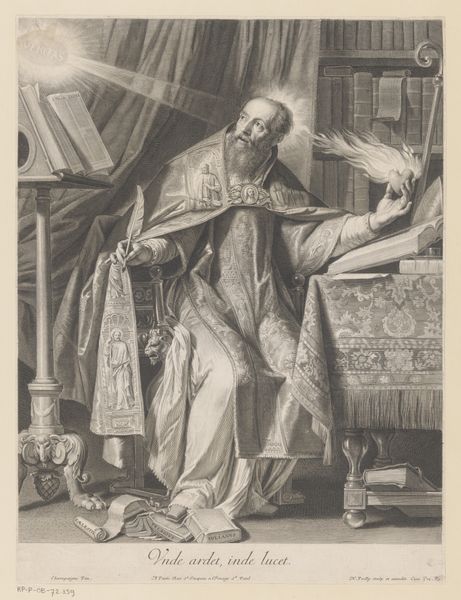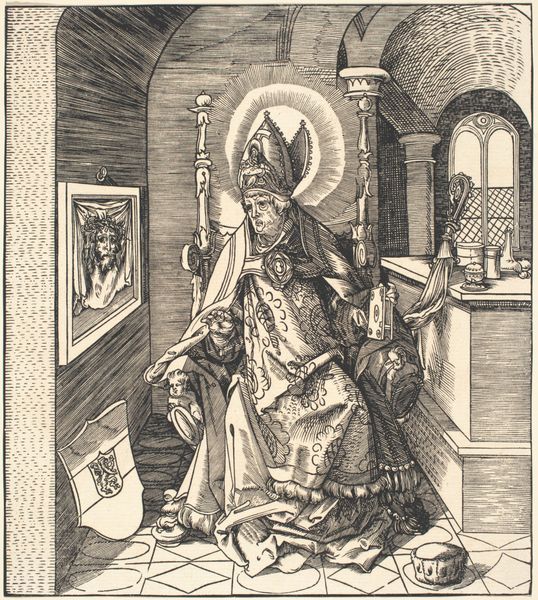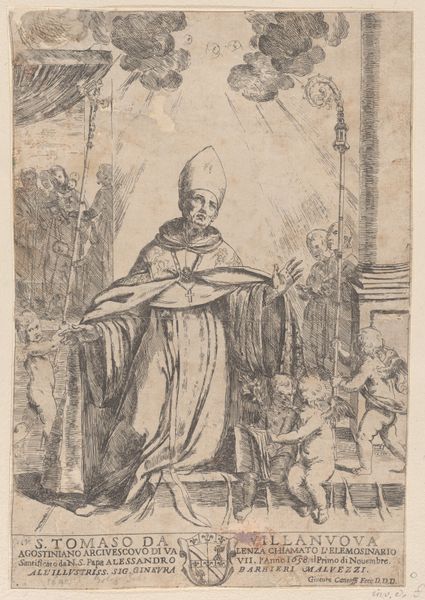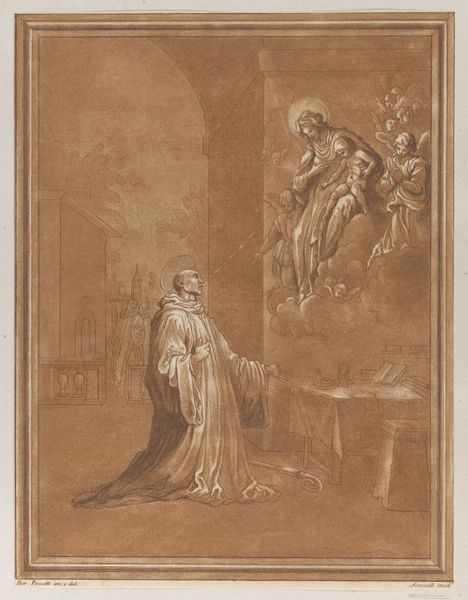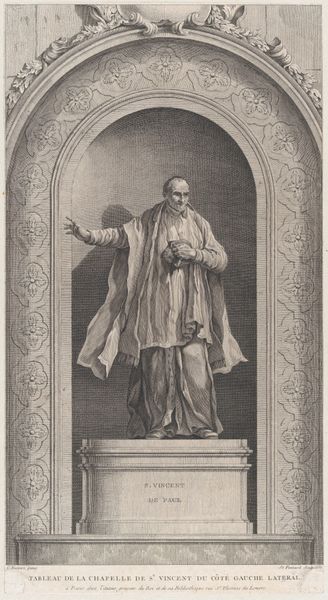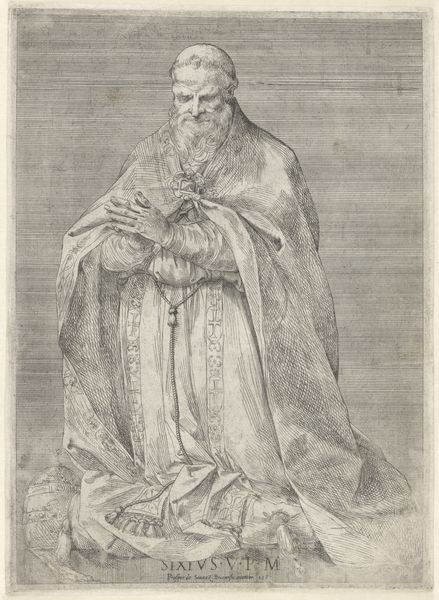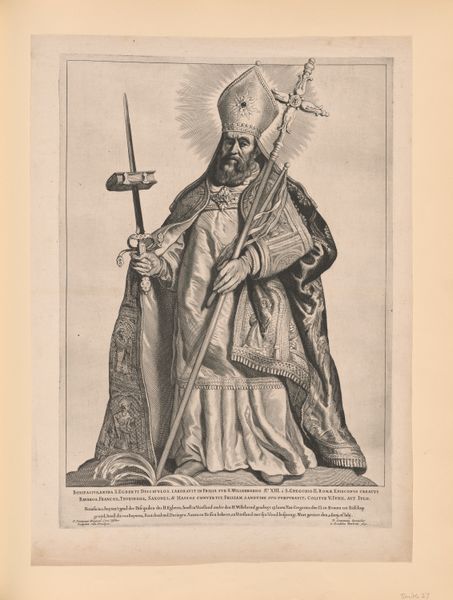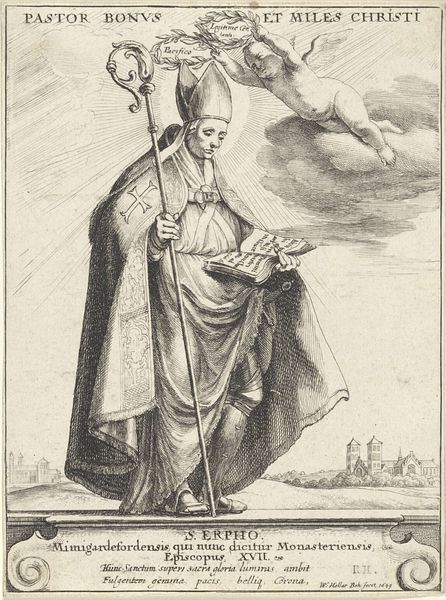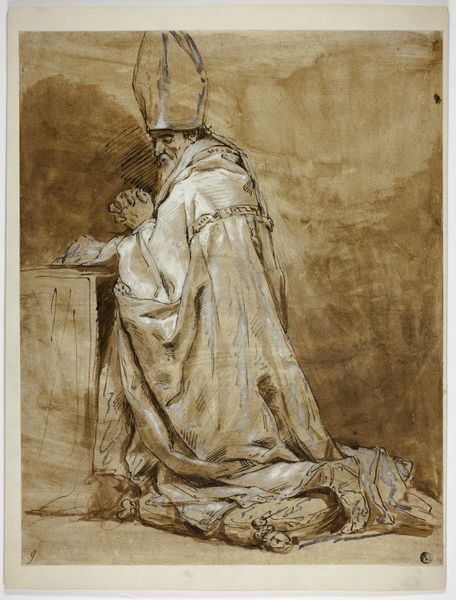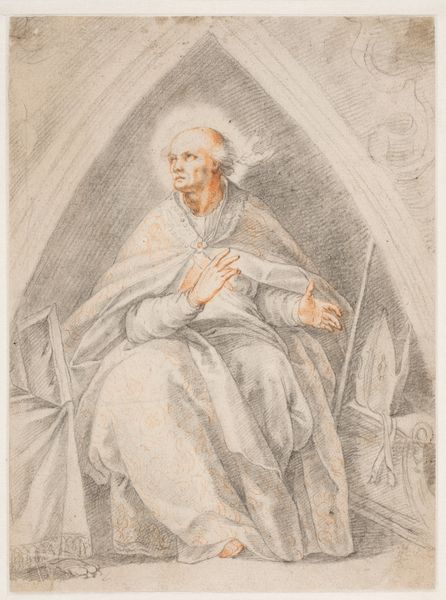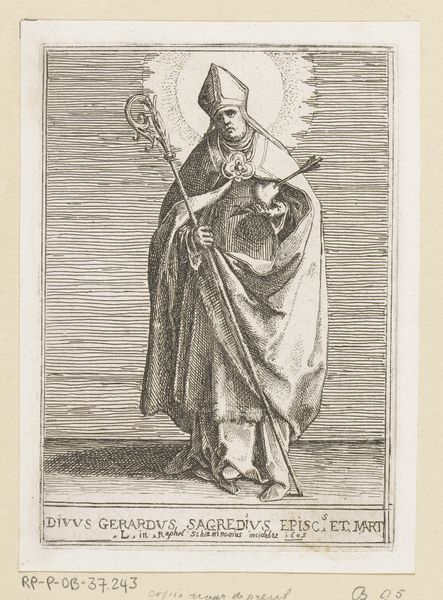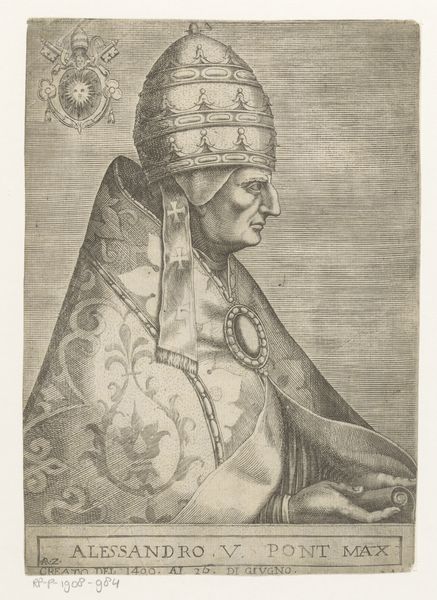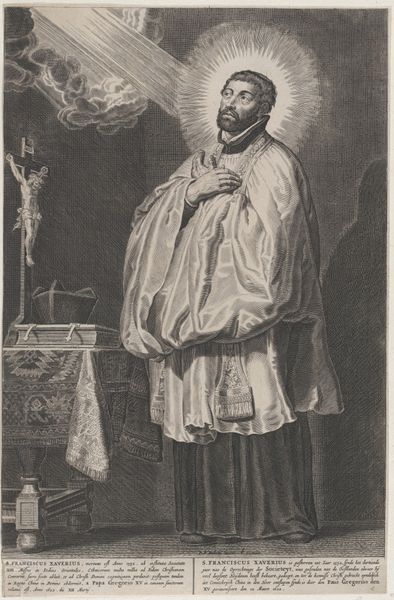
En kirkefader? St. Augustin 1654 - 1730
0:00
0:00
drawing, ink
#
portrait
#
drawing
#
baroque
#
charcoal drawing
#
oil painting
#
ink
#
portrait drawing
#
history-painting
#
watercolor
Dimensions: 288 mm (height) x 189 mm (width) (bladmaal)
Curator: Here we have "En kirkefader? St. Augustin", dating from between 1654 and 1730, currently held at the SMK, Statens Museum for Kunst. The artist is Johann Michael Rottmayer. Editor: My first impression is one of intense interiority. Despite the angels swirling in the background and the grand clerical garb, the muted tones lend the whole piece a deeply introspective mood. Curator: It is intriguing, isn't it? Rottmayer, known for his history paintings, has depicted who is believed to be St. Augustine immersed in scholarly work, presumably composing theological texts. His gaze directed upward could imply divine inspiration. Think about the public role of religious imagery during the Baroque period and its aim to inspire religious fervor. Editor: Absolutely. And notice how Rottmayer strategically contrasts the earthly labor of writing with the implied divine guidance. The quill hovers just above the paper, a symbolic pause before Augustine commits thought to page. It makes you consider the intersection between individual will and external influence, how we, even as seemingly independent agents, are always navigating forces beyond ourselves. Who holds access to create a certain narrative, and for whom? Curator: Consider the context: The period produced many paintings with direct and indirect religious propaganda purposes. Augustine was, of course, incredibly influential. Do you see how Rottmayer makes a reference to a canonized individual whose writing serves specific institutions? Editor: And not just any canonized figure. Augustine’s own life was marked by dramatic transformation. From hedonistic pursuits to pious dedication – an interesting role model for viewers to this artwork during the period. The material – ink and watercolor – is noteworthy as well; such modest implements serve to create a picture filled with incredible moral and institutional authority. Curator: A fantastic point, because the piece can really act as a cultural and political record! We have to be attuned to whose stories are amplified and who benefits from their circulation. Editor: Indeed. Looking at this, I’m struck by how a relatively small drawing manages to encapsulate such complex relationships of power and belief, of individual agency and institutional might. Thank you for drawing my attention to such interesting historical points, very thought-provoking. Curator: The pleasure was all mine. These kinds of dialogues are always rewarding.
Comments
No comments
Be the first to comment and join the conversation on the ultimate creative platform.
